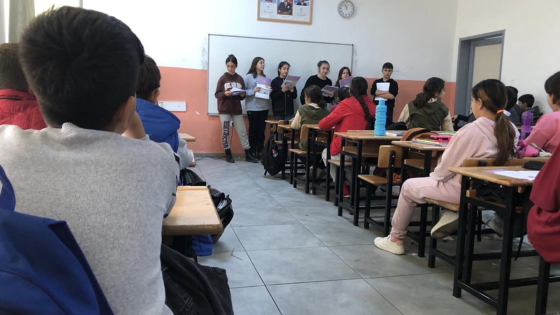Each year, over 80% of college freshmen in the US complete the Free Application for Federal Student Aid (FAFSA). The FAFSA collects detailed financial information as well as a list of up to six colleges where the student is considering attending. The government uses the FAFSA information to determine eligibility for federal aid, but it lacks the logistical capacity to dispense aid on its own. Instead, the government enlists colleges as partners in distributing federal dollars to college students. In the process, the colleges a student lists on her FAFSA receive full access to the student’s FAFSA information, including information about the student’s family finances and the number of potential competitors the college is facing. This partnership has been treated as a mere administrative detail by students, parents, policymakers, and even economists. It is not. As I demonstrate, colleges use the FAFSA to engage in substantial price discrimination with widespread repercussions for the cost of a college education as well as the equilibrium sorting of students into colleges.
Colleges in the US charge high sticker prices but routinely offer discounts of varying sizes to their students, which means that students at the same college often pay vastly different prices for the same education. These discounts can be sizable and are intended to influence the student’s choice of which college to attend. For instance, if a college has a posted sticker price of $20,000 per year, but it offers a student a $15,000 discount, the relevant transaction price is not $20,000 but $5,000. Each college offers a similar ‘price quote’ to the student, and she chooses the college that makes her the most attractive offer, taking into account other college characteristics that she values in addition to price.1
Colleges care about the FAFSA because it provides them with a source of low-cost, high-quality information about a student’s willingness-to-pay. It is low-cost because the federal government bears the burden of collecting this information. It is high-quality because the government imposes fines or jail time for misreporting information on the FAFSA. Moreover, the FAFSA comes bundled with a convenient monitoring technology for ensuring that its information is reliable. Thirty percent of FAFSA forms are automatically audited using IRS tax data. If a student’s FAFSA is not randomly selected for audit, then that student’s college has full discretion to flag her FAFSA for audit anyway. Indeed many colleges simply flag all of their students’ FAFSA forms.2 Effectively, the FAFSA grants colleges generous access to the IRS database and allows them to use that information to learn about a student’s willingness-to-pay.
The impact of sharing FAFSA information with colleges
Whether consciously or unconsciously, we have made a policy decision to share FAFSA information with colleges. Is sharing the FAFSA with colleges a good policy choice? Specifically, what would happen to prices, student–college sorting, and welfare if colleges could not use the FAFSA to price discriminate? Answering these questions requires estimating counterfactual scenarios, and with that in mind I build a structural model of college pricing. In Fillmore (2015), I estimate the model using student-level data from the National Postsecondary Student Aid Study, and I use my estimates to simulate counterfactuals in which colleges are unable to use the FAFSA to price discriminate.
I find that there would be three primary consequences if colleges could not use the FAFSA to price discriminate.
- First, the variance in prices among students at the same elite college would fall by 17%.3
- Second, transaction prices at elite colleges would fall by $825 per student per year, and student welfare would rise.
However, the change in prices would vary by income so that students with parent adjusted gross income of $36,670 would see no change in price, those with higher incomes would see their prices fall, and those with lower incomes would actually see their prices rise.4 Put differently, colleges use the FAFSA to price discriminate in a way that amounts to a 1.9% income tax coupled with a $709 rebate, so the lowest-income students receive the rebate, but it is taxed away as income rises.
Figure 1. Change in price if colleges could not use the FAFSA

Notes: The fitted values plotted here come from regressing the estimated change in price relative to baseline on parent adjusted gross income (included as a fourth-order polynomial). No other covariates were included.
The third consequence of preventing colleges from using the FAFSA to price discriminate is that 12% of students who are currently attending elite colleges would be inefficiently priced out of the elite market and attend a non-elite college.
This occurs because colleges would no longer be able to tailor their prices as precisely. These students are ‘marginal’ in the sense that it was only slightly optimal for them to be matched with an elite rather than a non-elite college. These marginal students consist of a mixture of low-income students and high-income, low-ability students.
Concluding remarks
In summary, we have made a policy choice to share FAFSA information with colleges. This arrangement has been viewed as an administrative detail by students, parents, policymakers, and even economists. My results demonstrate that this seemingly unimportant administrative detail is actually an important policy lever that should be part of the current debate around redesigning our federal financial aid system.
References
Fillmore, I (2015), “Price Discrimination and Public Policy in the U.S. College Market”, Job Market Paper.
Grant, T (2006), “Families maximize their eligibility for financial aid”, Pittsburgh Post-Gazette, October.
van der Klaauw, W (2002), “Estimating the Effect of Financial Aid Offers on College Enrollment: A Regression-Discontinuity Approach”, International Economic Review 43(4): 1249–1287.
Weston, L (2014), “Four college financial aid maneuvers that can backfire”, Reuters, January.
Footnotes
1 Most high-school seniors complete the FAFSA at the same time as their college applications. A primary reason for doing this is so they can compare price offers when choosing which college to attend. Research by van der Klaauw (2002) demonstrates that these discounts are indeed effective at attracting students.
2 It appears to be public knowledge that many colleges verify all of their FAFSA forms (Grant 2006, Weston 2014).
3 Elite colleges consist of four-year private colleges plus very selective public colleges (which roughly correspond to flagship state schools). Non-elite colleges then consist of less-selective and non-selective public colleges.
4 30% of students at elite colleges have parent adjusted gross income below $36,670.



